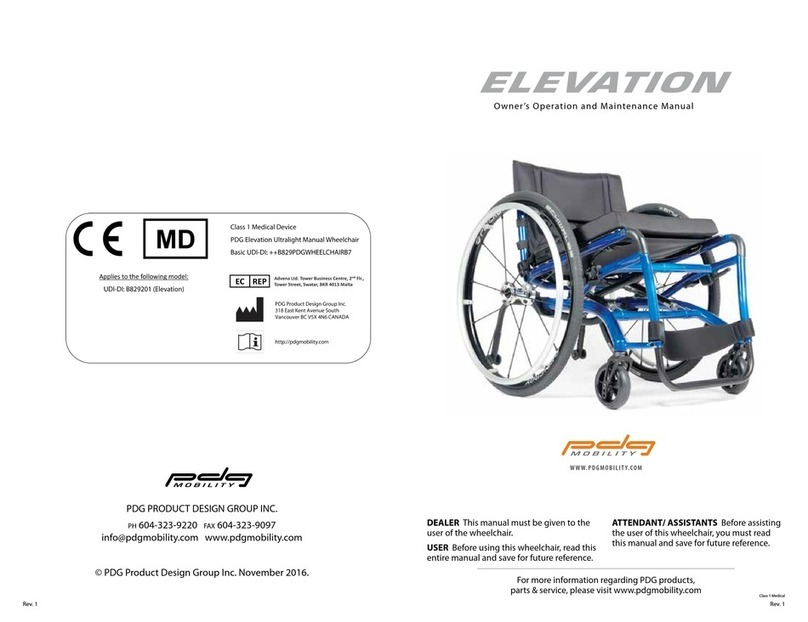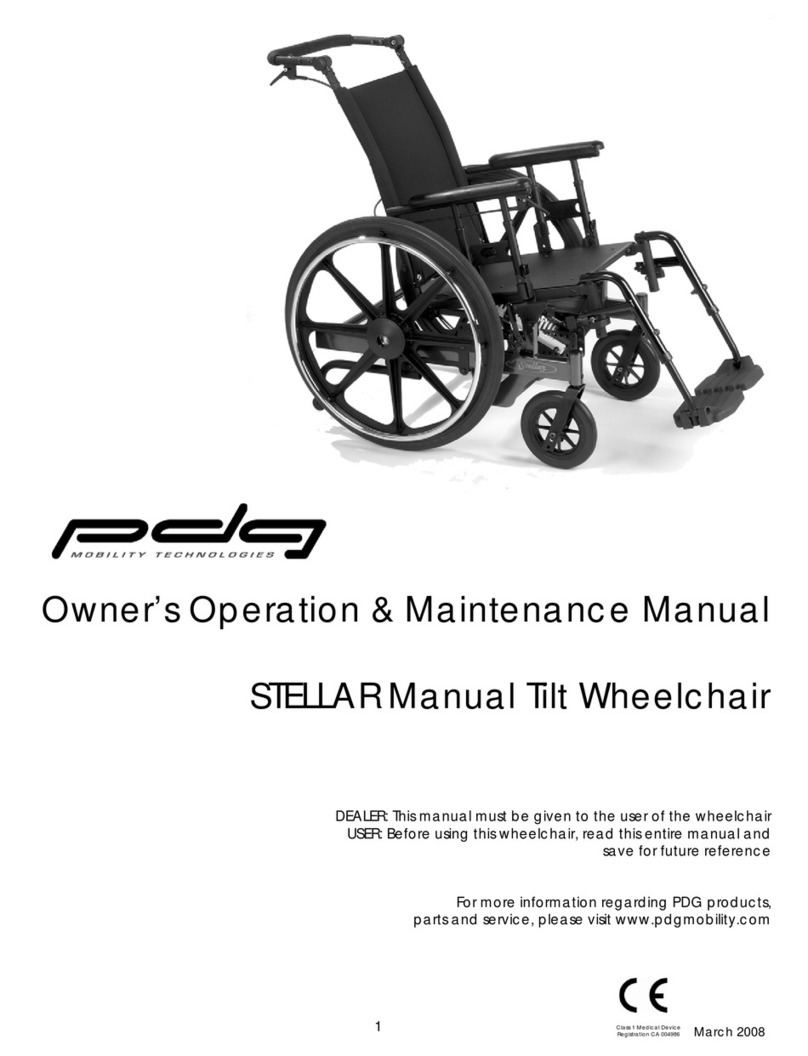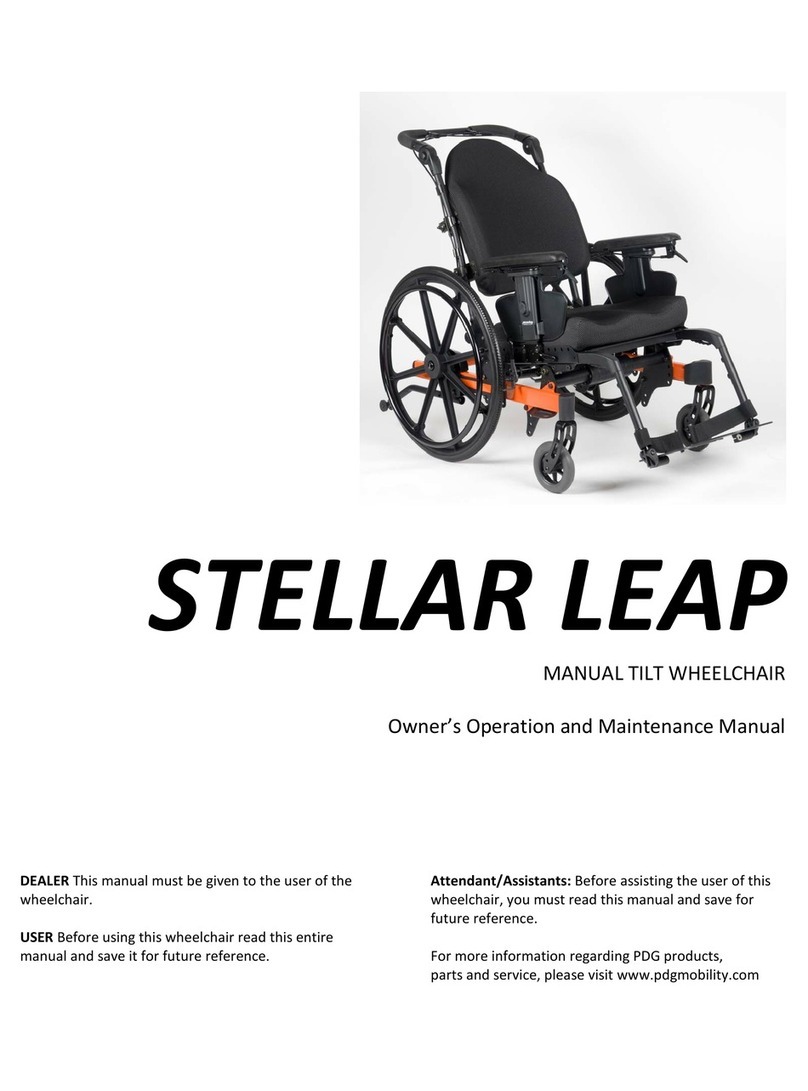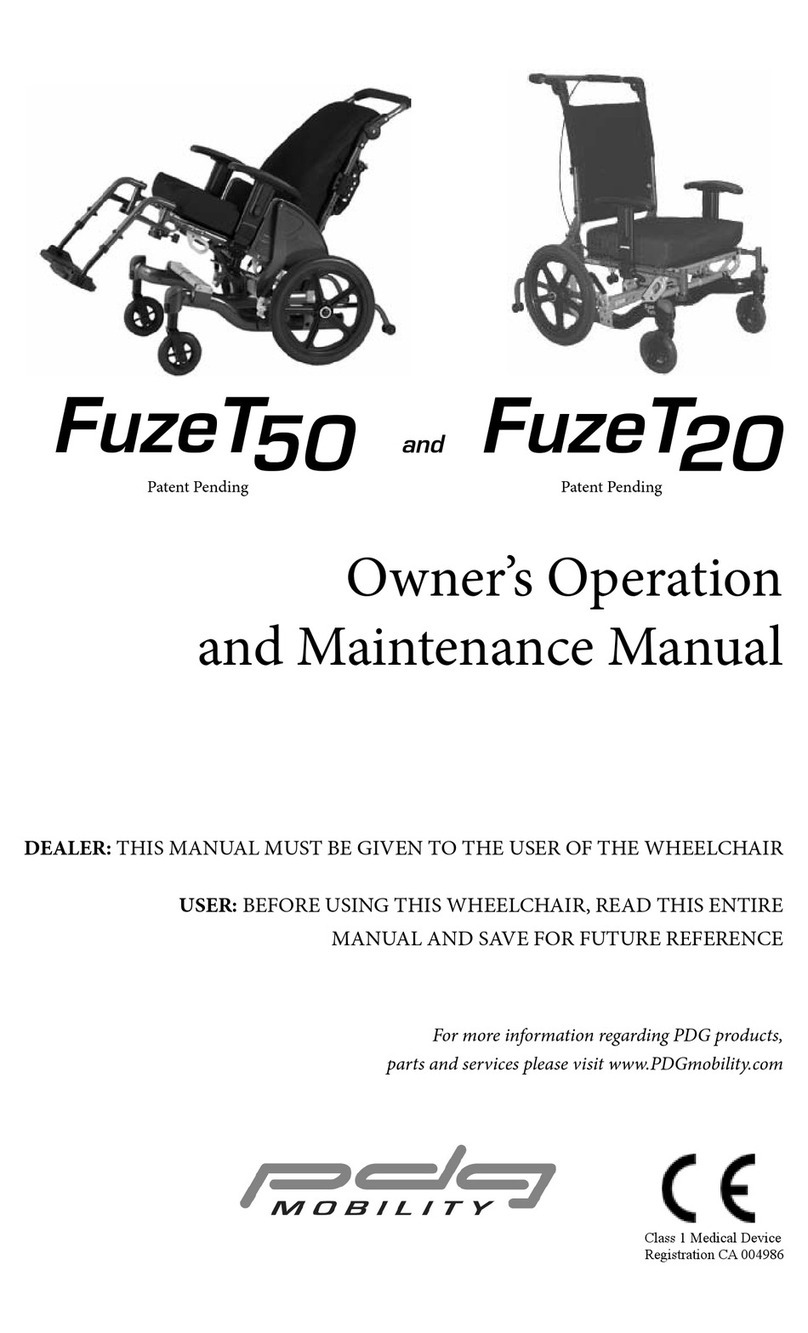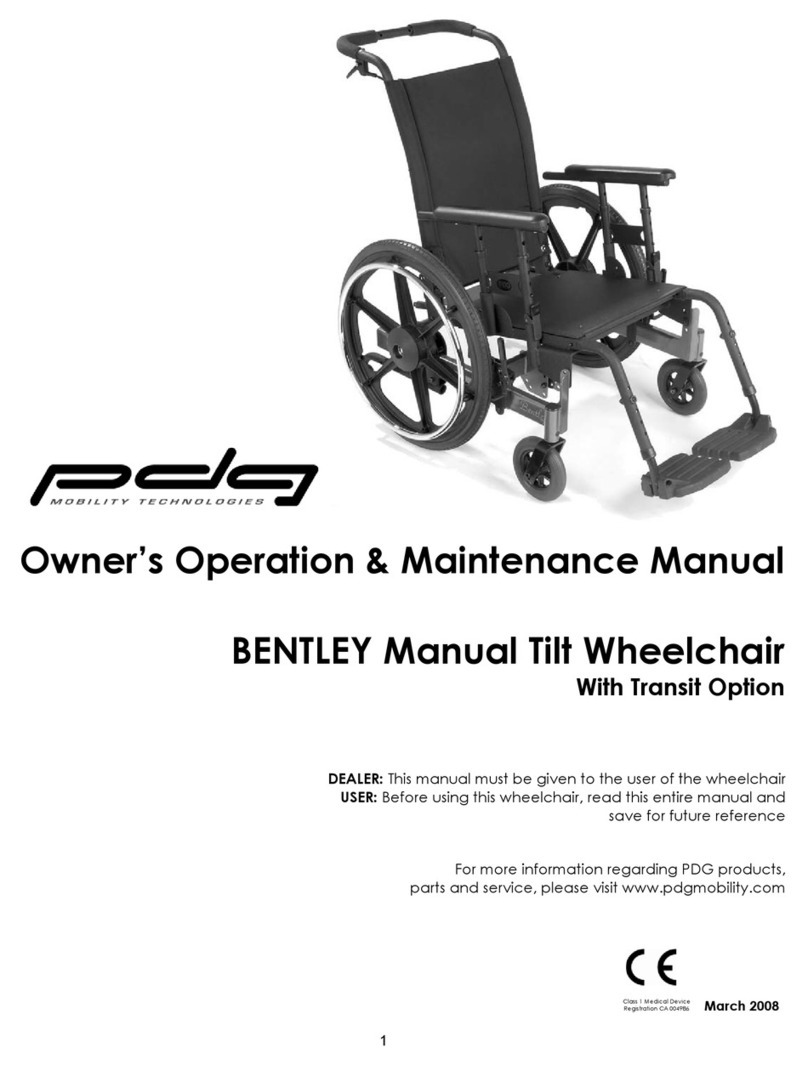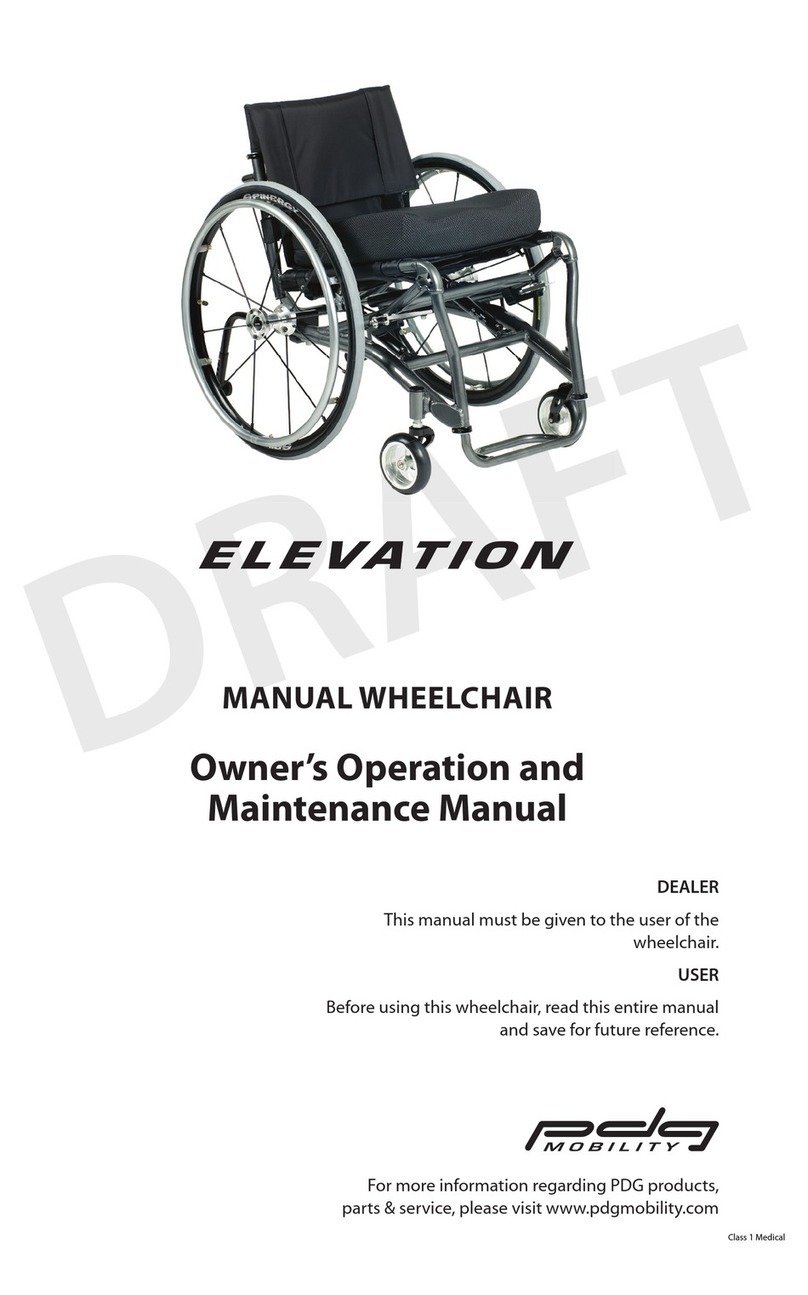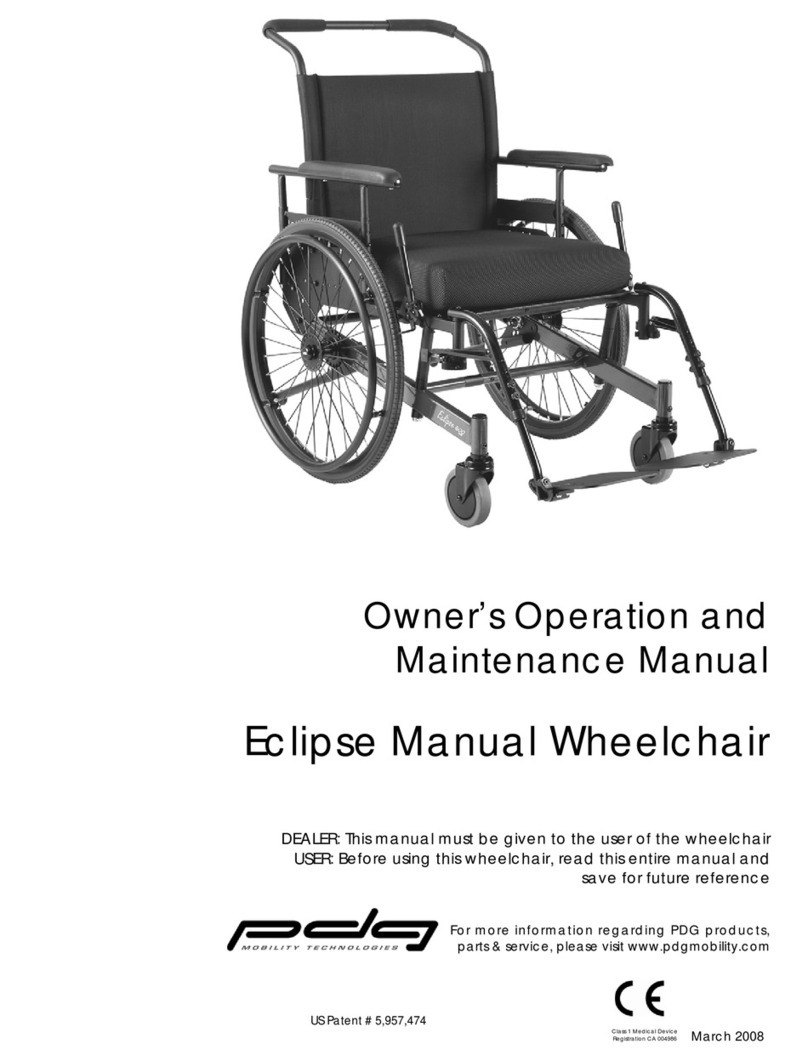
PAGE 5
Class 1 Medical
Rev. 2
3NOTICE –READ BEFORE USE
As a manufacturer of wheelchairs, PDG endeavors to supply a wide variety of
wheelchairs to meet the many needs of the end user. However, final selections of the
type of wheelchair to be used by an individual rests solely with the user and his/her
healthcare professional capable of making such a selection. Thus it is recommend an
Assistive Technology Professional, clinical professional or therapist be consulted to
determined which model would best meet the wheelchair user’s mobility and positioning
needs.
All wheelchair set-up and adjustments must be performed by a qualified technician. The
options you choose and the set-up and adjustments have a direct impact on the
wheelchairs stability. Factors to consider that affect your safety and stability are:
a. User’s abilities and capabilities specifically of strength, balance and
coordination.
b. The types of daily hazards and obstacles encountered.
c. The specific dimensions, options and set up of the wheelchair. In particular any
changes to the seat height, seat depth, seat angle, back angle, size and position
of the rear wheels and front casters will change the stability of your wheelchair.
You should only make changes after consulting with a qualified professional.
WARNING and CAUTION notices as used in this manual apply to hazards or unsafe
practices, which could result in personal injury or property damage.
NOTE –THE INFORMATION CONTAINED IN THIS DOCUMENT IS SUBJECT TO CHANGE
WITHOUT NOTICE. An updated version of this owner’s manual may be available at
www.PDGMobility.com
INDICATIONS FOR USE –The Stellar Series Manual Tilt Wheelchair is intended to provide
mobility to persons restricted to a seated position.
CONTRAINDICATIONS:
Does not have the required ability to adequately manage the functions of a
manual tilt-in-space wheelchair and does not have a capable caregiver for the
required assistance
Cannot tolerate prolonged periods in a seated position with posterior tilt
Highly agitated occupants
WHEELCHAIR TIE-DOWN RESTRAINTS AND SEAT RESTRAINTS –PDG does not
recommend wheelchair users be transported in vehicles of any kind while in wheelchairs.
Wheelchair users should transfer to the vehicle seat and use the vehicle-manufacturer-
installed restraint systems whenever it is feasible, and the unoccupied wheelchair should
be stored in a cargo area or secured in the vehicle during travel. However, if
transportation in a vehicle in the wheelchair is required, the wheelchair must be
equipped with PDG factory installed transport-ready tiedown mounting points and the
wheelchair occupant must use a restraint device. The Bentley wheelchair complies with
the crash testing requirements of ISO 7176-19: 2008 and, as such, has been designed and
tested for use as a forward-facing seat in motor vehicle. Thus, for transportation in a
vehicle the wheelchair must be restrained from movement using RESNA WC-4:2017,
section 18 wheelchair tie-down system and the vehicle must be equipped with RESNA
WC-4:2017, section 19 anchor points.
POSITIONING STRAPS and SEAT BELTS - IT IS THE OBLIGATION OF THE HOME DEALER,
THERAPISTS AND OTHER HEALTH CARE PROFESSIONALS TO DETERMINE IF A



